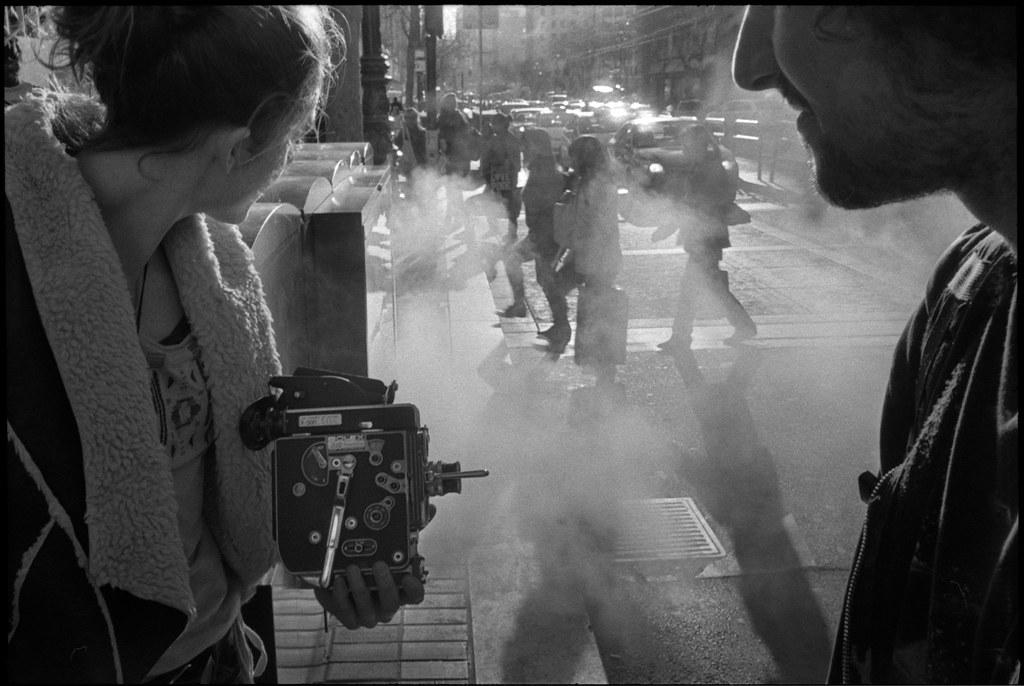Enter the realm of imagination where parallel worlds converge, characters intertwine, and stories unfold beyond the confines of a single film. Welcome to the enchanting realm of cinematic universes, an emerging trend that has revolutionized the landscape of movie franchises. In this ever-evolving era of silver screen storytelling, filmmakers have discovered a new playground where heroes, villains, and ordinary folks coexist, amassing fans on a global scale. From epic battles raging across galaxies to intimate character studies flourishing on urban streets, the cinematic universe phenomenon has taken the film industry by storm, captivating audiences and redefining the very notion of storytelling itself. Embark on this captivating exploration as we delve into the origins, impact, and future of cinematic universes, where the seams of reality blur, and the possibilities are as boundless as the human imagination.
The global success of cinematic universes: A game-changing trend revolutionizing movie franchises
Cinematic universes have become an unstoppable force in the world of movie franchises, revolutionizing the way stories are told on the big screen. This growing trend has taken the film industry by storm, captivating audiences and breaking box office records like never before.
One of the key features of cinematic universes is the integration of multiple films and characters into a single cohesive narrative. This interconnectedness allows for intricate plots and character arcs that span across various movies, creating a rich and immersive storytelling experience. With each installment adding new layers to the overall narrative, fans are drawn to the anticipation and excitement of discovering how their favorite characters’ journeys intertwine.
Another factor contributing to the success of cinematic universes is the sense of community they foster among fans. These franchises have a dedicated following, and fans can engage in discussions, debates, and speculation about the interconnected storylines, character development, and Easter eggs hidden throughout the films. This shared experience strengthens the bond between fans and the franchise, creating a vibrant and passionate fanbase.
| Benefits of Cinematic Universes: | |
|---|---|
| Box office success: | Raking in billions of dollars worldwide through the combined success of multiple films. |
| Expanded storytelling possibilities: | Allowing for complex narratives and character development across multiple films. |
| Engaged fanbase: | Fostering a strong community of passionate fans who eagerly participate in discussions and speculation. |
As cinematic universes continue to dominate the movie industry, studios are shifting their focus towards world-building and establishing interconnected franchises. This game-changing trend has not only revitalized beloved characters and stories but has also paved the way for new and exciting storytelling possibilities. The success and enduring popularity of cinematic universes prove that audiences crave immersive and interconnected narratives, setting the stage for a future where the boundaries between films and franchises are constantly expanding.

Embracing interconnected storytelling: The key to creating a successful cinematic universe
In recent years, cinematic universes have become the driving force behind the most successful movie franchises. Gone are the days of standalone films; audiences now crave an interconnected narrative that spans multiple characters, storylines, and even entire movie franchises. This growing trend has captivated moviegoers and opened up a world of endless possibilities for filmmakers.
One of the key factors behind the success of cinematic universes is their ability to create a rich and immersive storytelling experience. By interconnecting multiple films, these universes allow for a deeper exploration of characters and their individual arcs. Suddenly, the hero’s journey doesn’t just end with one film – it continues across several installments, allowing for character growth and development on a grand scale.
Moreover, the interconnected nature of cinematic universes creates a sense of anticipation and excitement among audiences. Fans eagerly follow the clues and Easter eggs placed throughout each film, piecing together the puzzle to unlock the larger narrative. This creates a dedicated fanbase that is constantly engaged, analyzing and speculating about what lies ahead for their favorite characters.
Benefits of embracing interconnected storytelling in cinematic universes:
- Expanded Worldbuilding: By connecting different films and franchises, cinematic universes allow for the expansion of the story’s universe. New locations, cultures, and mythologies can be introduced, providing a broader canvas for storytelling.
- Character Crossovers: Interconnected storytelling opens the door for exciting character crossovers. Heroes and villains from different films can come together, creating epic team-ups and clashes that fans have only dreamt of seeing.
- Long-Term Engagement: By extending the story across multiple films, cinematic universes keep audiences invested in the franchise for the long haul. A well-crafted interconnected narrative creates a loyal fanbase that eagerly awaits each new installment.
In conclusion, cinematic universes have revolutionized the way movies are made and experienced. The interconnected storytelling approach has proven to be the key to creating successful franchises that capture the imagination of audiences worldwide. Whether through expanded worldbuilding, character crossovers, or long-term engagement, embracing interconnected storytelling is the path to crafting a cinematic universe that stands the test of time.

Building consistency and continuity: Essential elements for a thriving cinematic universe
Cinematic universes have taken Hollywood by storm, captivating audiences with their interconnected storylines and characters that transcend individual movies. From Marvel’s expansive superhero universe to the wizarding world of Harry Potter, these sprawling franchises have become a growing trend in the world of movie franchises. But what exactly makes a cinematic universe thrive?
Consistency and continuity are two essential elements that lay the foundation for a successful cinematic universe. Creating a universe that feels connected and cohesive is crucial for captivating audiences and keeping them engaged for the long haul. The key lies in maintaining a sense of continuity across different movies, not only in terms of plot but also in the world-building and character development.
One way to achieve this is through careful planning and collaboration among filmmakers. Ensuring that each movie remains true to the established rules and mythology of the universe is paramount. The audience craves familiarity and enjoys seeing how different stories interconnect within the same world. Collaborative efforts like director roundtables and shared writers’ rooms can help ensure that the vision for the cinematic universe remains intact.
- Strong character arcs: Developing compelling character arcs that span multiple movies is a vital aspect of a thriving cinematic universe. Audiences want to see their favorite characters grow and change over time, facing challenges and evolving in exciting ways.
- Interconnectivity: A successful cinematic universe doesn’t limit itself to standalone films. It weaves a web of interconnected stories and characters, often leading to epic team-up moments that fans eagerly anticipate.
- Fan engagement: Engaging with the passionate fanbase and valuing their input is another crucial element. Studios and filmmakers can utilize social media platforms, fan events, and even fan theories to build excitement and create a sense of community within the cinematic universe.
By focusing on building consistency and continuity, cinematic universes can thrive and captivate audiences for years to come. The possibilities are endless as filmmakers continue to expand these interconnected worlds, giving fans an ever-growing tapestry of stories to immerse themselves in.
| Franchise | Year | Total Box Office |
|---|---|---|
| Marvel Cinematic Universe | 2008-present | $22.56 billion |
| Harry Potter | 2001-2011 | $7.72 billion |
| Star Wars | 1977-present | $10.33 billion |

Strategic expansion and collaboration: Maximizing the potential of cinematic universes through cross-platform integration
Strategic Expansion and Collaboration
Gone are the days when standalone movies ruled the roost; cinematic universes have taken over the entertainment industry by storm, becoming the prevailing trend in movie franchises. In the era of interconnectivity and cross-platform integration, studios are embracing the concept of expanding their cinematic universes strategically and collaborating with other franchises to maximize their potential.
Through cross-platform integration, cinematic universes can immerse audiences in a rich and interconnected storytelling experience that spans multiple movies, TV shows, comic books, and more. By weaving intricate narratives and interlinking characters and events, studios can create a seamless universe that keeps fans engaged and invested in the long run.
But it’s not just about expanding in quantity; quality collaborations also play a vital role in enhancing cinematic universes. Collaborating with other franchises allows for unique crossovers and unexpected alliances that can captivate audiences and offer fresh perspectives. These collaborations bring together beloved characters from different universes, leading to epic showdowns, team-ups, and endless possibilities that fans have only dreamt of.
Benefits of Strategic Expansion and Collaboration:
- Increased Scope and Variety: Strategic expansion allows cinematic universes to explore diverse genres, locations, and storylines, catering to a broader range of audience interests.
- Extended Fan Engagement: Cross-platform integration keeps fans invested and excited by offering a continuous stream of storytelling across various media, ensuring an enduring fan base.
- Financial Success: Collaborations between successful franchises can result in the collective strength of their fan bases, guaranteeing heightened box office numbers and increased revenue streams.
Examples of Successful Collaborations:
| Collaboration | Description | Result |
|---|---|---|
| Marvel Cinematic Universe (MCU) | The MCU brought together various superheroes and storylines from the Marvel comic universe, culminating in the epic “Avengers” crossover events. | Massive box office success, cultural phenomenon, and countless spin-offs and merchandise. |
| MonsterVerse (Godzilla vs. Kong) | Legendary monsters Godzilla and King Kong clashed in a monumental showdown, merging two iconic franchises. | Huge international box office numbers, reigniting interest in classic monster movies. |
| Star Wars and Indiana Jones | The crossover potential between these beloved Lucasfilm franchises offers the possibility of shared adventures and unexpected encounters. | Anticipated collaboration generating immense hype and fan speculation. |
As cinematic universes continue to grow in popularity, strategic expansion and collaboration present endless opportunities for creating immersive, interconnected narratives that leave a lasting impact on audiences. Whether it’s through expanding the scope of a single franchise or joining forces with other beloved universes, the potential to maximize the power of cinematic universes is undoubtedly an exciting frontier in the world of entertainment.
As the credits roll and the curtains slowly close on the world of cinematic universes, one thing remains abundantly clear: we are witnessing a monumental shift in the landscape of movie franchises. With every passing year, the concept of interconnected narratives and expansive storylines has captured the hearts and minds of both filmmakers and audiences alike.
From the early days of the Marvel Cinematic Universe, where Iron Man graced the silver screen for the very first time, to the intricate web of characters woven by DC Comics, and beyond, the trend of cinematic universes has undeniably taken root. What was once a mere fantasy now stands as a testament to the endless possibilities that lie within the realm of storytelling.
These interconnected worlds, brimming with heroes, villains, and everything in between, have not only breathed new life into cherished franchises but have also redefined the way we engage with cinema. Through carefully constructed narratives, glistening Easter eggs, and unexpected crossovers, cinematic universes have sparked a sense of anticipation and communal excitement like never before.
Beyond the screen, the impact of cinematic universes reverberates far and wide. From comic conventions buzzing with eager fans, dissecting theories and speculation, to the endless online discourse, these sprawling narratives have become a cultural phenomenon, transcending the confines of the movie theater, and embedding themselves into our daily lives.
While the very notion of cinematic universes carries its fair share of risks and challenges, it is through bold creativity and an unwavering commitment to the craft that these franchises have thrived. With every new installment, the intricate tapestry of interconnected stories expands, touching the hearts of generations and inspiring a new era of storytelling.
As we bid farewell to this exploration of cinematic universes, one thing remains certain: this growing trend is here to stay. In this era of endless possibilities, where heroes leap across screens and stories intertwine like delicate threads, we eagerly look forward to the next chapter in this ever-evolving cinematic landscape. So, grab your popcorn, sit back, and prepare to lose yourself in these cinematic worlds, for the journey has only just begun.




